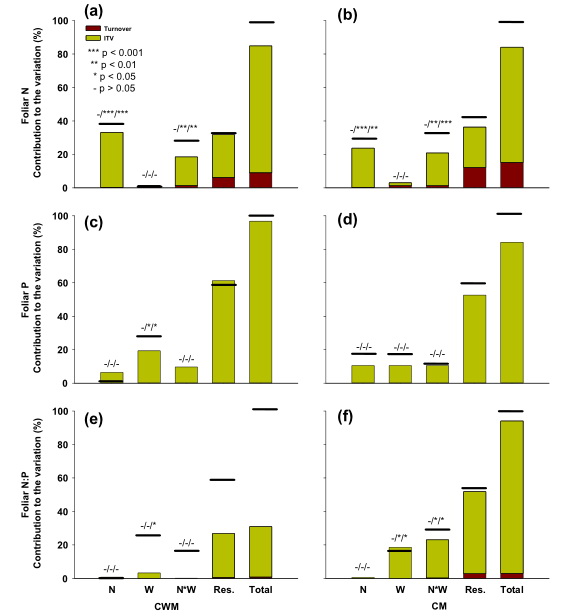Stoichiometric traits in plants are important drivers for several fundamental ecological processes, including primary productivity, herbivory, and nutrient cycling. While there is mounting evidence for the substantial species-specific variation in the responses of plant stoichiometric traits to global change drivers, we still know little about such changes at community-level, which would be dependent on both intra-specific and inter-specific changes.
Dr. LV Xiaotao and his colleagues from the research group of Ecological Stoichiometry in Institute of Applied Ecology carried out a field experiment with factorial additions of nitrogen and precipitation in a grassland of northern China.
They hypothesized that both nitrogen and water addition would change community-level stoichiometry, and mainly through the changes at intra-specific level in the short-term.
They investigated the response of species composition to the changes of nitrogen and water availability. Furthermore, they measured the nitrogen and phosphorus concentrations in each species of each plot. After that, they calculated the community means of stoichiometric traits with either biomass-weighted or non-weighted methods.
After two years of treatments, they found that nitrogen enrichment significantly enhanced the plant N concentrations at community-level, but only under ambient water condition. Water addition reduced plant P concentrations but enhanced N:P at the community-level. Those results indicated that N and water additions interacted to affect community-level stoichiometric ratios. The changes of community-level stoichiometric traits in response to all the treatments were mainly through the intra-specific variation, with the contribution of species turnover being limited.
This study would help improve our understanding of the responses of functional composition in grasslands to the projected nitrogen enrichment and alteration of precipitation regime in northern China. The findings of interactive effects of N and water additions on plant stoichiometry indicate that it will be more difficult to predict the changes of plant-mediated biogeochemical cycling in the scenarios of global changes than previously assumed.
This work has been published in Plant and Soil as an article entitled ‘Intraspecific variation drives community-level stoichiometricresponses to nitrogen and water enrichment in atemperate steppe’.

Fig 1. Decomposition of changes in foliar N (a, b),foliar P (c, d),and N:P (e, f) using the community weighted trait mean (CWM) based on dry biomass and non-weighted trait mean(CM) based on presence/absence (Image by Lü Xiaotao).
Email: yueqian@iae.ac.cn
Publication Name:Lü Xiaotao et al.